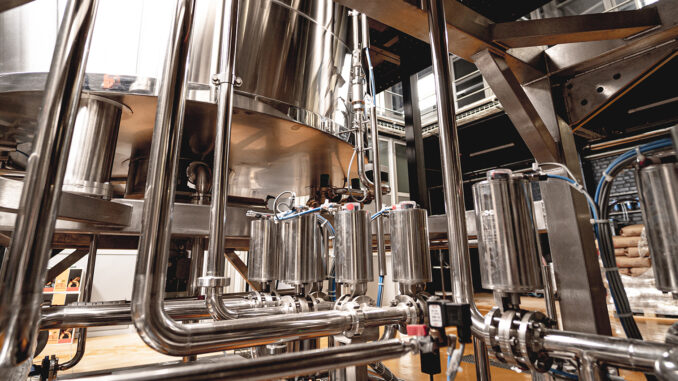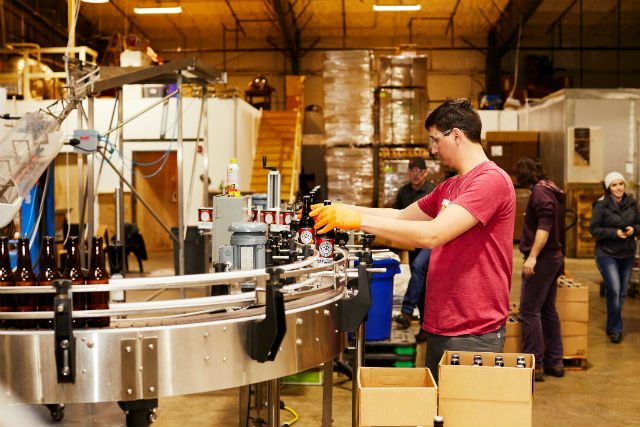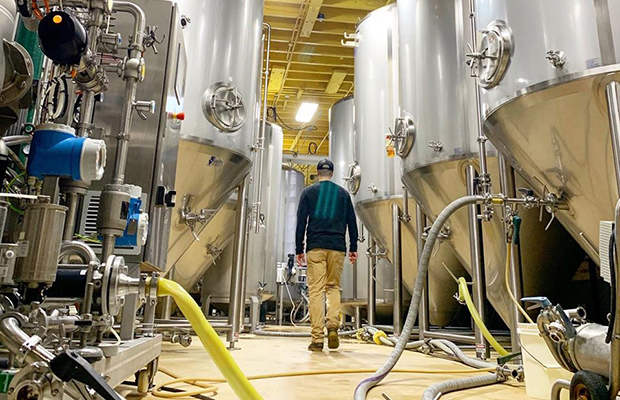
Just as a brewer can’t hit target flavor profiles without the right hops or yeast, a brewery can’t sustain production without the right parts, tools, and processes.
“Maintenance is no different,” said Daniel Deitsch, Production Maintenance Manager at MadTree Brewing. “If you’re 15 pounds short of a specific hop, you’ve changed the final beer. Same with maintenance — if you’re missing a key part or haven’t logged the issue properly, your operation can grind to a halt.”
That parallel may seem obvious, but Deitsch’s experience at MadTree highlights how easily overlooked the “ingredients” of brewery maintenance can become. When he implemented a computerized maintenance management system (CMMS), his first step was a full audit of spare parts inventory. What he found was a wake-up call: nearly $35,000 worth of parts that were undocumented, unused, and invisible to the existing system.
“Critical spares are one of the biggest driving factors of a successful maintenance program,” Deitsch said during a seminar at the 2025 Craft Brewers Conference. “But things get tucked away, they go out of sight, and they become forgotten. That can happen anywhere — even in well-run breweries.”
He traced much of the surplus to commissioning days and a lack of clear tracking. And as any brewer who’s ever re-ordered a component only to find it buried in storage months later knows, those mistakes come at a cost. That cost can be steep. As parts age out or machines are upgraded, untracked components may become obsolete. And if you go to reorder without knowing what’s on hand, the bill could balloon to $50,000 or more.
As Deitsch put it, “You can’t manage what you don’t know you have.”
That’s where CMMS platforms — especially those that are mobile-friendly — can offer tangible ROI. At MadTree, mobile access to work orders and inventory didn’t just streamline the process; it gave back time. Deitsch said up to 10 labor hours per week, to be exact.
That kind of efficiency becomes non-negotiable once a brewery crosses a certain production scale. As operations push past the 5,000-barrel mark, the shift from brewing as a craft to brewing as a business becomes unavoidable — and so do the challenges that come with it.
As breweries cross the 5,000-barrel threshold, their operations begin to shift from small-batch, event-driven production to full-scale manufacturing. That’s when the pain points of informal systems become too large to ignore — especially as ownership shifts from shared spaces to custom-built facilities, and the stakes of downtime rise with distribution demands. Maintenance, once a back-burner task, becomes a business imperative. It’s no longer just about fixing what breaks; it’s about tracking every asset, upgrade, and process from end to end.
“Everyone in brewing knows your day moves fast,” Deitsch said. “People used to send a text, or mention a problem in passing. That stuff gets lost. Now, if someone sees something broken, they open the app, type a short note, and it’s in the system. It doesn’t live in someone’s memory. It lives in a work order.”
The result is not only better organization but a stronger culture of accountability and communication. Team members on the floor have a direct way to report issues, track progress, and stay in the loop as repairs happen.
“They get updates when something changes,” Deitsch said. “It’s not just empowering my techs. It’s empowering the whole team.”
Not all CMMS tools are created equal, of course. Some are clunky or only accessible to management, creating bottlenecks and leaving frontline staff out of the loop. The most effective platforms prioritize ease of use, accessibility, and transparency. As Deitsch put it, “Just because you’ve always done it that way doesn’t mean it’s the right way.”
READ MORE: Enhancing Brewery Maintenance and Safety Practices
Corey Dickens of Brightly Software emphasized in the talk that implementing maintenance software isn’t just about catching up — it’s about creating a turning point. Just like upgrading your brewhouse or switching to a new POS system, investing in a CMMS can serve as a reset moment to reassess what you have, where it is, and how you track it.
For small teams juggling daily demands, these systems can unlock overlooked value by turning chaos into clarity.
As the brewing industry faces tighter margins and a more competitive market, many breweries are re-evaluating their operations to make every dollar stretch further. A well-managed maintenance program — supported by the right digital tools — isn’t just an operational upgrade. It’s a strategic necessity.
“Maintenance is more than fixing things,” Deitsch said. “It’s about preparing, organizing, and making sure the next problem doesn’t take you by surprise. Because the cost of scrambling is always higher than the cost of being ready.”






Be the first to comment